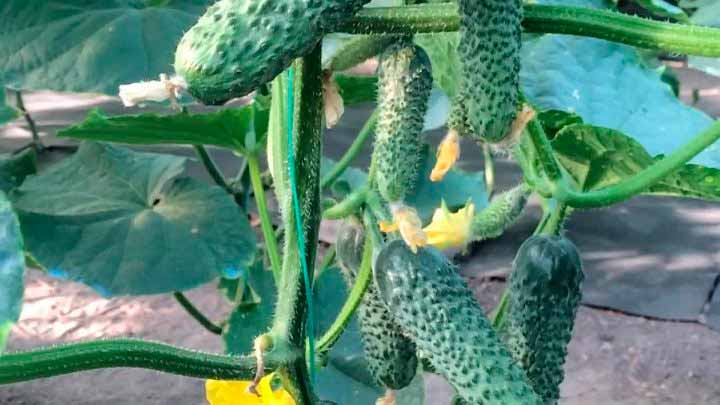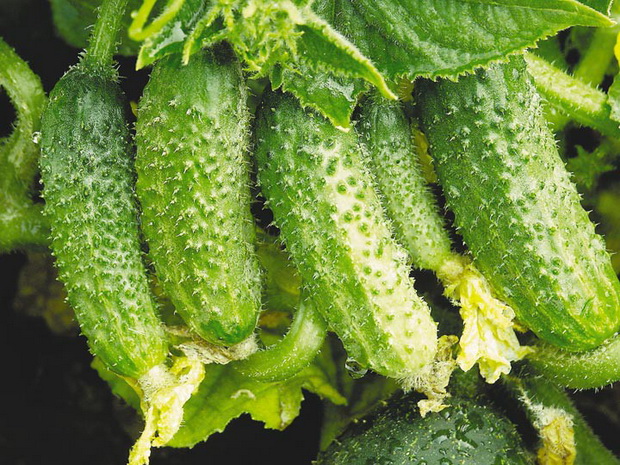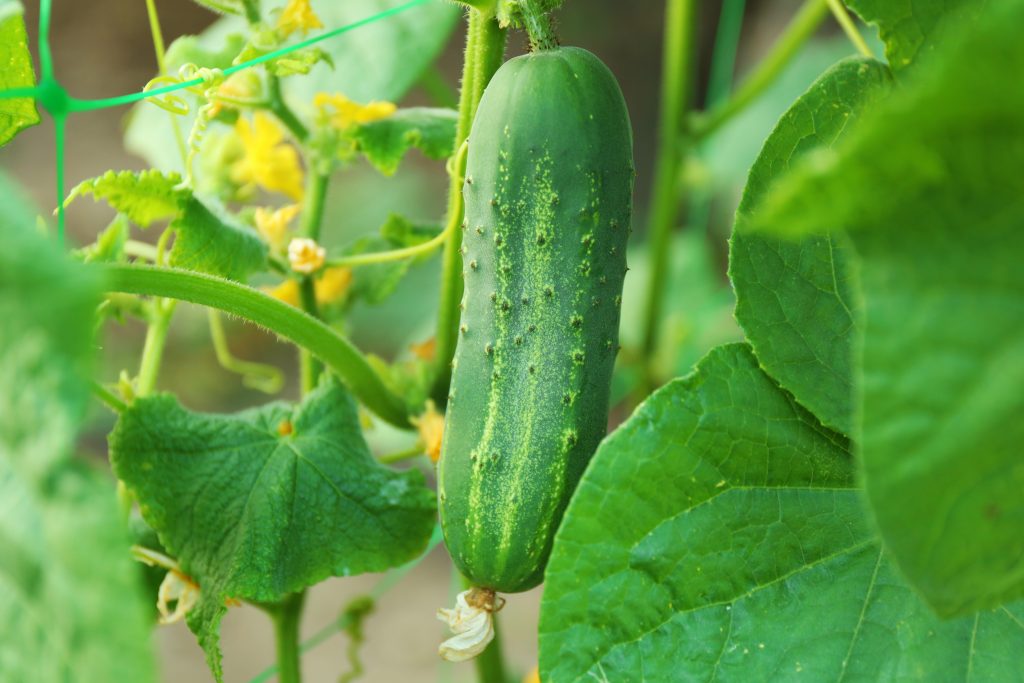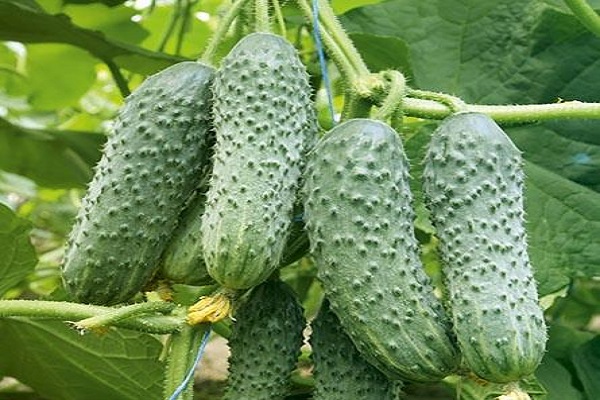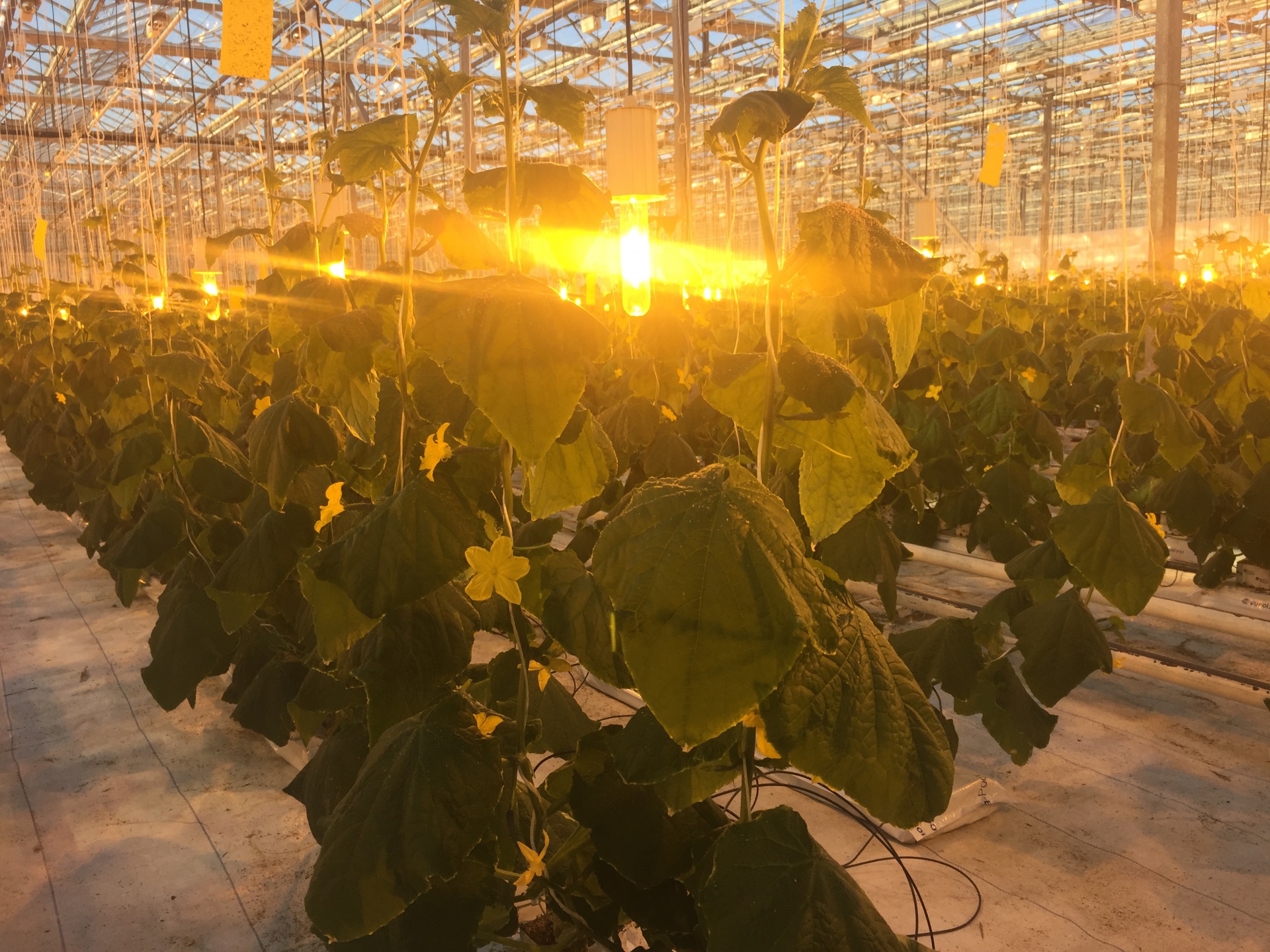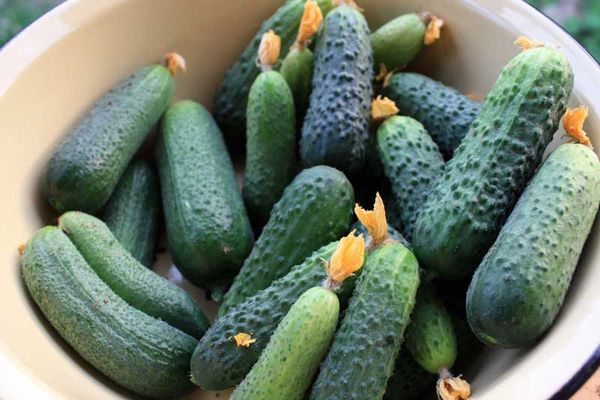Content:
Cucumber Lutoyar F1 bred by breeders from Turkey. The seeds are sold by Yuksel Seeds. Previously, the variety was called Janissary. The variety is listed in the State Register of Breeding Achievements of Russia in 2016.
Description and characteristics of the variety
Cucumbers of the Lutoyar F1 variety are medium early, from the first sprouts to the collection of gherkins, it can take 40-50 days.
The variety is parthenocarpic, the flowers are female. Can be planted in an open area and in greenhouses. The type of growth is indeterminate, that is, the stems are constantly growing, even with the formation of flowers and their setting. The Lyutoyar cucumber bush is average in height, average foliage. The leaves are small, dark green. One node has 3-4 fruits. From 1 bush, you can collect up to 7 kg of cucumbers. In the greenhouse, up to 12.8 kg are collected from 1 m² of plantings.
Zelentsy 12-13 cm long, 2-3 cm wide. Fruit weight 100-110 g. Cucumbers are dark green in color, have an elongated cylindrical shape and large tubercles. Also gherkins are heavily pubescent. Cucumbers do not turn yellow, even if they remain on the lash for a long time. The rind is loose. The pulp is crispy and aromatic, with small seeds, there are no voids. Cucumbers can be eaten raw, added to salads, salted, marinades.
Cucumbers Lutoyar can withstand transportation over a long distance, they are stored for a long time.
Advantages
Thanks to its advantages, even a beginner can grow cucumbers:
- seeds remain viable for 10 years;
- the variety is parthenocarpic, it does not need to be pollinated;
- medium early;
- high yield;
- gherkins have excellent taste;
- the variety is resistant to diseases;
- transportable;
- unpretentious in care.
There is only one drawback: this is a hybrid, seeds cannot be collected from your site, they are only bought in stores.
Sowing seeds and growing seedlings
To grow a good harvest, you first need to sow the seeds at home in peat cups in late March or early April.
The substrate for seedlings is made by mixing 2 parts of humus, 2 parts of peat and 1 part of rotted sawdust. If the seeds are sold in dragees, they are not soaked. If they are in their usual form, it is worth placing them in a damp cloth for 3 days.
The seeds are buried in the soil to a depth of 1 cm, watered abundantly, and covered with foil.
To grow seedlings, the air temperature should be + 20-22 degrees during the day and 15 degrees at night. Daylight hours are 12-14 hours. The film should be lifted daily, constantly ventilated, but not drafted. And also make sure that the earth does not dry out. When the first shoots sprout, the film must be removed.
Transplanting seedlings and caring for it
Cucumber seedlings can be transplanted into the plot when they have 3-4 true leaves. In this case, it is required to plant 2-3 seedlings per 1 m².
You should choose a place that has a light earth with neutral properties, well lit by the rays of the sun, protected from the north winds. The first fertilizer can be applied when digging the ground in the fall. It is required to scatter 3 buckets of humus, 3 glasses of wood ash and 100 g of nitrophoska on 1 m², and then dig up the earth to the depth of a shovel. In the spring, it is again necessary to dig up the soil, make beds. In areas near Moscow, you can plant seedlings in the soil at the end of May.
In the regions that are located to the north, it is required to plant seedlings in a greenhouse.
You should dig holes, put seedlings in peat cups there, cover with earth, after planting, water the seedlings abundantly.
You can also install a spray nozzle. But when blooming buds, you need to use up to 12 liters of water. Be sure to water the bushes in the evening, when the sun goes down, use warm, well-settled water.
During the growing season, the bushes should be fed 5-6 times. Fertilize for the first time at the beginning of flowering. The ideal top dressing for cucumbers is ash, it contains a large amount of phosphorus and potassium, trace elements, but not a lot of nitrogen. If you do not additionally feed the bushes with potassium, you will not have to wait for a bountiful harvest. If there is a lack of phosphorus, the roots will be weak, they will not be able to saturate the plants with nutrients and water.
Cucumbers really like feeding with liquid manure solution, but dry manure cannot be used. Instead, you can make a mixture by adding 10 g of ammonium nitrate, 15 g of superphosphate, 8 g of potassium sulfate, pouring 1 liter of mullein into a bucket of water. The mixture must be applied at the root, after having abundantly watered the plant with warm water.
The bushes really like feeding from fermented nettle infusion, it contains a lot of nitrogen. To do this, 5 kg of plucked nettles need to be diluted with 5 liters of water, leave for a week so that the composition is completely fermented. Then add 10 liters of water to each liter of nettle infusion. Pour 1 liter under the bush.
It is also required to pull up weeds, loosen the ground, but very carefully, since the roots are close to the surface.
Diseases and pests
Cucumbers are resistant to various diseases, but they can be attacked by parasites.
- Discover aphids it is possible on fallen leaves, a sharp decrease in the formation of ovaries. Pests have dark green bodies up to 2 mm long. If there are few aphids, the plants can be washed with a soap solution. Also, the bushes can be sprayed with an infusion of onion peels or a solution with ash every 5 days. You can also sprinkle a crop from aphids with Fitoverm.
- Spider mites they cling to the underside of the leaves, drink the juice, a cobweb appears on the plants, as a result, the bushes die. One of the methods of controlling parasites is to add phytoseilus to plants, which are natural enemies of ticks.
- Also on the culture may appear slugs, they carry fungal spores, powdery mildew. They can be collected by hand using tweezers. You can also water the plants with iron sulfate.
- Culture can be attacked bear, these are rather large pests up to 5 cm long. They gnaw the stem and roots. To catch the bear, traps are set up; this requires mixing hot peppers, honey, water. Alder also repels pests. It is possible to use the method - deepening the poison of Medvetox into the ground by 3-4 cm.
- Landings are often attacked thrips - pests that hibernate in the remains of vegetation. Up to 7 generations can appear during the growing season. To combat, seedlings can be treated with an infusion of hot pepper and water. It should be infused for a day. Laundry soap grated on a grater is poured into it to ensure better adhesion to the foliage.
- Cucumber gnats plantings in mid-spring are striking. One female is capable of laying up to 300 eggs at a time. The larvae gnaw at the roots and stems. To fight parasites, you can put 1 tablet of Spark in a bucket of water. This rate is enough for 100 m² of plantings.
- Wireworms - These are the larvae of the click beetle up to 5 cm long, they live in the soil.If there are many parasites, the soil should be sprayed with Bazudin, Diazinon.
- Gall nematode - a small pest up to 1.5 mm long, penetrates the roots, it is detected by swelling - galls. To destroy pests, the top layer of the earth is replaced with a new one, the soil is treated with steam.
- Bushes are amazing sprout flies, their size is up to 5 mm. Females lay their eggs in the ground. The hatched larvae destroy the cucumber bushes. Whiteflies attack cucumber plantings; they appear from mid-June. To eliminate insects, the culture is sprayed with Confidor.
Even from pests and diseases, you can use the folk method. Pour a handful of onion husks into 1.5 liters of boiling water, put on fire, boil for 5 minutes, then cool the composition. After that, you need to pour in another 5 liters of water and spray the foliage in the evening.
Caring for the Lutoyar F1 cucumber variety is quite simple, even a beginner can grow them. It is important to regularly inspect the plantings in order to notice the attack of pests in time.
